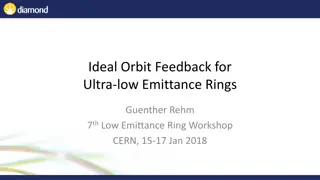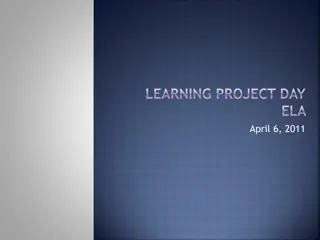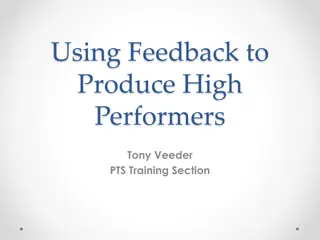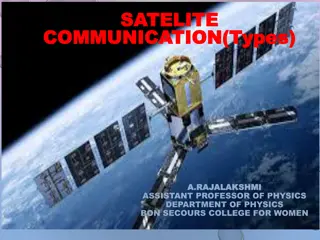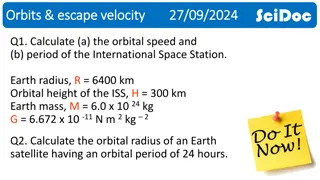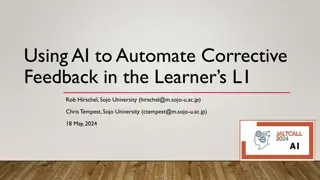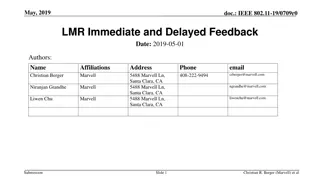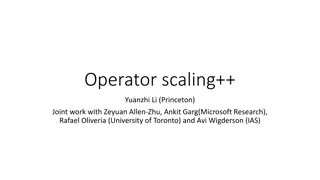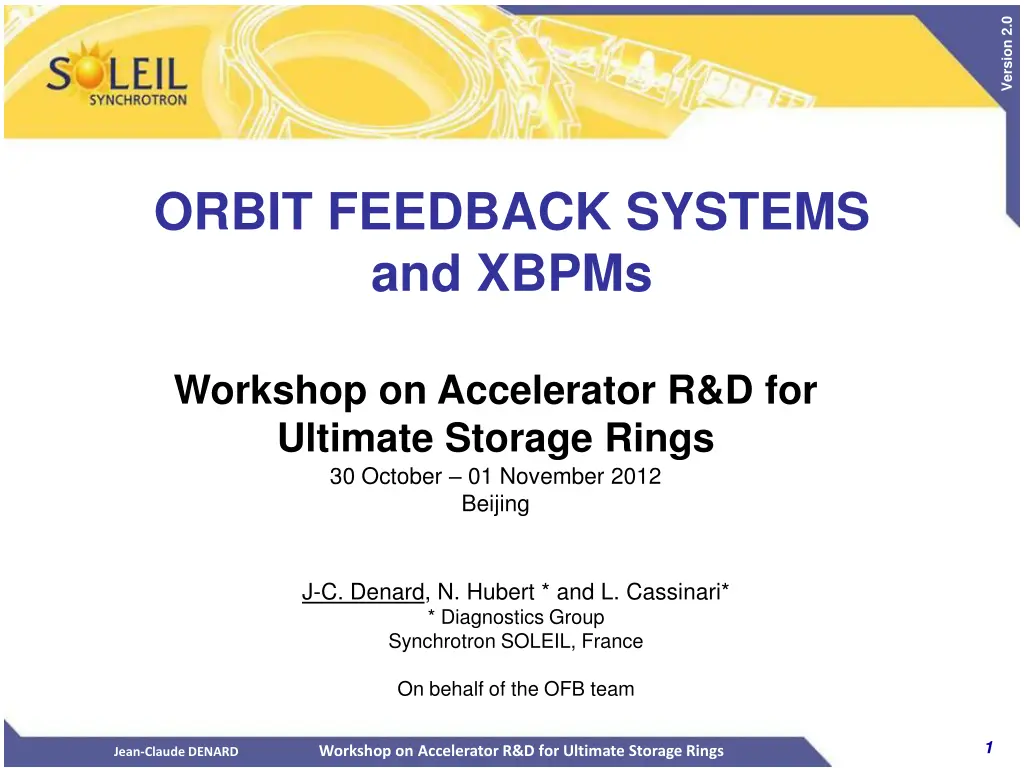
Accelerator R&D Workshop Highlights: Version 2.0 and Soleil Design
Delve into the Accelerator R&D Workshop's discussions on Version 2.0 Orbit Feedback Systems, XBPMs, and Soleil's Stability Design for Ultimate Storage Rings. Explore topics like orbit stability, perturbation sources, beamline acquisition time, and the meticulous Soleil design for stability. Gain insights into the critical requirements and challenges faced in maintaining beam stability and enhancing accelerator performance.
Uploaded on | 0 Views
Download Presentation

Please find below an Image/Link to download the presentation.
The content on the website is provided AS IS for your information and personal use only. It may not be sold, licensed, or shared on other websites without obtaining consent from the author. If you encounter any issues during the download, it is possible that the publisher has removed the file from their server.
You are allowed to download the files provided on this website for personal or commercial use, subject to the condition that they are used lawfully. All files are the property of their respective owners.
The content on the website is provided AS IS for your information and personal use only. It may not be sold, licensed, or shared on other websites without obtaining consent from the author.
E N D
Presentation Transcript
Version 2.0 ORBIT FEEDBACK SYSTEMS and XBPMs Workshop on Accelerator R&D for Ultimate Storage Rings 30 October 01 November 2012 Beijing J-C. Denard, N. Hubert * and L. Cassinari* * Diagnostics Group Synchrotron SOLEIL, France On behalf of the OFB team 1 Workshop on Accelerator R&D for Ultimate Storage Rings Jean-Claude DENARD
Version 2.0 Outline Orbit Stability USR stability requirements Perturbation sources SOLEIL design for stability BPM system for USR BPM supports Vacuum issues Electronics Orbit Feedback systems Feedback Bandwidth Short term stability Slow drifts XBPMs and photon beam feedback systems Existing XBPMs in e-beam FB loops XBPM developments needed Other kind of photon beam feedback systems 2 Jean-Claude DENARD Workshop on Accelerator R&D for Ultimate Storage Rings
Version 2.0 USR Stability Requirements The minimum attainable beam size is the diffraction limited photon beam Photon beam dimensions from an undulator: 100 m or rad 10 Divergence 2 photonL undulator = 4 10 keV photons w/ 2m undulator Size = 1.8 m Div. = 5.6 rad Size 1 photons = ' 2 undulator L 0.1 /10 requirements position 180 nm angle 560 nrad 1 10 100 E (keV) 3 Jean-Claude DENARD Workshop on Accelerator R&D for Ultimate Storage Rings
Version 2.0 Sources of Perturbations (4) Beamline Acquisition Time: If TPERTURBATION > TINTEGRATION Emittance growth If TPERTURBATION < TINTEGRATION Drifts S O U R C E S N O I S E Experimental hall activities Ground vibrations Insertion Devices Cycling Booster operation mains +harmonics Thermal effects Frequency (Hz) 103 10-2 10-1 1 10 102 Time Period (s) 102 10 1 10-1 10-2 10-3 Emittance growth only Drift 1/Ti An orbit feedback is needed to stabilize the beam position from DC up to ~200 Hz 4 Jean-Claude DENARD Workshop on Accelerator R&D for Ultimate Storage Rings
Version 2.0 Soleil Design for Stability (1) Machine & exp rimental hall on a common concrete slab made on top of 11 to 17 m long pilars resting on compact Fontainebleau sand. Building structure and crane supports are decoupled from the stable slab. Machine tunnel air and machine water cooling stabilized to 21 0.1 C. Actual air temperature is not exactly at that temperature. Stabilization is closer to 0.25 C around average values that can be different from 21 C. The important thing is to keep the temperatures stable whatever they are. Girder rigidity in order to have all resonances above ground excitation frequencies (> 50 Hz) The BPMs must be stable (beam stability cannot be better than that of the BPM system.) The BPM is the fixed point of its vacuum chamber section; the rest of vacuum chamber can move during beam delivery and during baking. There is a bellow on at least one side of each BPM. Bellows are shielded for low vacuum chamber impedance The BPM supports are rigid in transverse directions, the vertical stability of 4 BPMs (for the long beamlines) is garanteed by INVAR supports. The BPM blocks are water cooled. 5 Jean-Claude DENARD Workshop on Accelerator R&D for Ultimate Storage Rings
Version 2.0 Soleil Design for Stability (2) The golden orbit is done with respect to the quadrupole magnetic center (via Beam Based Alignment). But after that, the reference becomes the concrete slab via the BPMs adjacent to each straight section. With a perfect orbit feedback algorithm, only slab deformation could spoil beam stability. Top up operation Feedforward corrections for changes of undulator gap and phase, to better than 10 m (should be down to 2 m for USRs) Booster compensation cables have been installed for correcting a 3 Hz spectrum line due to Booster ramping power supply cables. Cooling fans have been displaced for suppressing 47 to 108 Hz spectrum lines. Orbit feedback systems. This is the last stone of the stability building blocks. It suppresses the ID feedforward residuals, small temperature variation effects in the tunnel, but not large ones. The FOFB is not very efficient above 70 Hz (with a 200 Hz BW). 6 Jean-Claude DENARD Workshop on Accelerator R&D for Ultimate Storage Rings
Version 2.0 Outline Orbit Stability USR stability requirements Perturbation sources SOLEIL design for stability BPM system for USR BPM supports Vacuum issues Electronics Orbit Feedback systems Feedback Bandwidth Short term stability Slow drifts XBPMs and photon beam feedback systems Existing XBPMs in e-beam FB loops XBPM developments needed Other kind of photon beam feedback systems 7 Jean-Claude DENARD Workshop on Accelerator R&D for Ultimate Storage Rings
Version 2.0 BPM Mechanical and Vacuum Design Mechanical design: Thermal expansion coefficients of steel is 11ppm/ C => at 1.2 m height and 0.1 C drift, one gets 1.3 m drift. INVAR is ~10 times better. A solution could be Invar BPM supports, at least at the critical locations. Vacuum BPM Design: With 20 mm diameter vacuum chambers, the button BPMs might loose too much sensitivity New BPM design for small round pipe Shielded bellows matching the small round tubes. 8 Jean-Claude DENARD Workshop on Accelerator R&D for Ultimate Storage Rings
Version 2.0 BPM Electronics for USRs The Libera commercialized by Instrumentation Technologies is the state of the art. Libera fulfills the USR requirements: Low temperature drifts Low beam current dependence (< 200 nm in top-up mode) Low bunch pattern dependence Position interlock built in Fast orbit feedback features built in (for BW up to ~200 Hz; it is possible to go up to 500 Hz, like at Petra III) Post mortem data available High reliability (thanks to the electrode switching scheme) 9 Jean-Claude DENARD Workshop on Accelerator R&D for Ultimate Storage Rings
Version 2.0 USR Orbit Feedback Systems Probably similar to existing systems Bandwidth extension to 500 Hz would supress better the 50Hz spectrum lines of the mains (60 Hz in Americas) Vacuum chamber space with thin stainless steel walls need to be reserved for fast correctors If a square correction matrix is not possible, the correction algorithm should favor the few beamlines with tightest stability requirements 10 Jean-Claude DENARD Workshop on Accelerator R&D for Ultimate Storage Rings
Version 2.0 SOLEIL Feedback Characteristics Parameters (H,V) SOFB FOFB BPM # 122, 122 122, 122 Corrector # 57, 57 arcs 57, 57 50, 50 Straight sections 46, 47 Sing. Value # 28, 23 rad Corrector max. 1.0, 0.7 mrad Correction rate 0.1 Hz 10 kHz Bandwidth 0-0.05 Hz 0-200 Hz Efficiency IDs and arcs Mostly IDs 11 Jean-Claude DENARD Workshop on Accelerator R&D for Ultimate Storage Rings
Version 2.0 Slow orbit feedback system Orbit stability requirements 1/10th of beam sizes (H: 20 m, V: 0.8 m) 122 BPMs 50 with supports on tunnel slab (4 of them on INVAR stands) 72 with supports bolted on top of the girders Libera Electronics noise: 0.02 m rms (0.1-10 Hz) Libera module 57 Horizontal and vertical steerers Cut-off frequency a few 10 s of Hz (Al Chamber) RF-frequency Algorithm: SVD 57 singular values in both plane o correction rate: every 10 s o 5 s averages of 10Hz BPM data oRF frequency correction step size : 0.3 Hz Steerers are made with secondary coils in sextupole magnets Matlab based control application 12 Jean-Claude DENARD Workshop on Accelerator R&D for Ultimate Storage Rings
Version 2.0 Fast Orbit Feedback System An all-embedded and distributed solution Diamond Communication Controller for data distribution Computation done inside Libera FPGA (1 H&V corrector Corrector power supplies controlled by Libera modules 1 Libera) 122 LIBERA modules 122 BPMs 0 dB gain 50 fast correctors 100 power-supplies 200 Hz 13 Jean-Claude DENARD Workshop on Accelerator R&D for Ultimate Storage Rings
Version 2.0 Both Slow and Fast Systems work together The Soleil orbit feedback systems are unique so far : they have two distinct sets of correctors for the slow and the fast system. Advantages: air correctors over a thin stainless steel pipe can make fast corrections. An algorithm periodically unloads the fast (and weak) correctors onto the slow (and more powerful) correctors. The slow feedback benefits from its larger number of correctors for better correcting slow drifts. It looks like the best way to go for future USRs. 14 Jean-Claude DENARD Workshop on Accelerator R&D for Ultimate Storage Rings
Version 2.0 SOLEIL Fast Orbit Feedback System Vertical plane FOFB ON FOFB OFF FOFB OFF FOFB ON Vertical beam motion averaged on all e-BPMs ~300 nm (0.1-500 Hz ) It means 200 nm RMS in the middle of the straight sections 15 Jean-Claude DENARD Workshop on Accelerator R&D for Ultimate Storage Rings
Version 2.0 Fast Orbit Feedback Bandwidth N. Hubert FB type (users operation) SR Facility Sets of correctors Bandwidth ALBA* Fast Strong DC - 130 Hz Bandwidth Limitations: Strong BESSY II * Fast DC - 40 Hz Strong DIAMOND Fast DC - 130 Hz BPM electronics latency Correctors & Power supplies Vacuum Chamber Eddy Currents Fast network Latency SOLEIL noise suppression requires BW > 150 Hz No real need for BW > 500 Hz Strong ELETTRA Fast DC - 150 Hz Strong ESRF-U* Fast DC - 150 Hz Strong SLS Fast DC - 100 Hz Strong SPEAR3 Fast DC - 100 Hz Strong ( + Fast as a subset of slow ones) ALS Slow + Fast DC - 60 Hz Strong (+ Fast as a subset of slow ones) APS Slow + Fast DC - 100 Hz ESRF Slow + Fast Strong + Fast DC - 150 Hz NSLS II* Slow + Fast Strong + Fast DC - 500 Hz Slow + Fast or Fast Dead-band or DC - 500 Hz PETRA III Strong + Fast SOLEIL Slow + Fast Strong + Fast DC - 20 Hz SSRF Slow + Fast Strong + Fast DC - 100 Hz * Feedback system not yet commissioned 16 Jean-Claude DENARD Workshop on Accelerator R&D for Ultimate Storage Rings
Version 2.0 Slow Drifts Horizontal plane X 1-week rms Drifts X = 0.517 m rms X = 0.140 m rms Y = 0.134 m rms Y = 0.130 m rms X 1 m or rad 1 week Beam Delivery NanoTomography source point position and angle during 1 week Vertical plane Y peak to peak values X = 5.16 m p to p X = 2.01 m p to p Y = 1.36 m p to p Y = 1.05 m p to p Y 1 m or rad Beijing 29 Oct.- 1 Nov. 2012 (#) USR Workshop 17 Jean-Claude DENARD Workshop on Accelerator R&D for Ultimate Storage Rings
Version 2.0 Outline Orbit Stability USR stability requirements Perturbation sources SOLEIL design for stability BPM system for USR BPM supports Vacuum issues Electronics Orbit Feedback systems Feedback Bandwidth Short term stability Slow drifts XBPMs and photon beam feedback systems Existing XBPMs in e-beam FB loops XBPM developments needed Other kind of photon beam feedback systems 18 Jean-Claude DENARD Workshop on Accelerator R&D for Ultimate Storage Rings
Version 2.0 Photon BPMs of BM Beamlines in OFB at SOLEIL Introduction of photon XBPMs in the orbit feedback loop Stabilization of the Photon beam position on Bending Magnet Beamlines XBPM in the global loop XBPM is considered as an e-BPM Possible only if XBPM measurement is reliable at any time (no gap/phase dependence) Fully tested; will be in routine operation in November 2012 Variation (RMS) of the vertical position on x-BPM N 2 with and without x-BPM N 1 in the slow feedback loop (experiment duration = 6 hours). RMS drift w/o XBPMs RMS drift w/ XBPMs Stability Gain Beamline ODE 1.25 m rms 0.37 m rms 3.3 METRO 0.46 m rms 0.24 m rms 1.9 Vertical beam position measured on second x-BPMs (not included in the feedback loop) at the METRO, SAMBA and DIFFABS bending magnet beamlines. First x-BPM is alternatively included or excluded from the slow feedback loop. Improvement on vertical stability can be seen when the SOFB runs with the x-BPMs SAMBA 0.38 m rms 0.23 m rms 1.7 DIFFABS 0.33 m rms 0.16 m rms 2.1 19 Jean-Claude DENARD Workshop on Accelerator R&D for Ultimate Storage Rings
Version 2.0 XBPMs in Slow OFB at Diamond Without XBPM feedback.. ..with XBPM feedback. Front End XBPMs Courtesy C. Bloomer Beamline slit currents (Data from beamline I19) 20 Jean-Claude DENARD Workshop on Accelerator R&D for Ultimate Storage Rings
Version 2.0 XBPMs, State of the Art There are Reliable XBPMs; maybe not at the 200 nm level yet. BM beamline XBPMs (blade type) OK in vertical plane only ID XBPMs (blades type) OK in both planes at fixed gap. Most XBPMs are in stainless steel and are sensitive to temperature variations. Present Development SOLEIL/LNLS of a stable blade XBPM at the 200 nm level, even after a beam loss. Not yet tested. 21 Jean-Claude DENARD Workshop on Accelerator R&D for Ultimate Storage Rings
Version 2.0 XBPM R&D for USRs Need hard X-ray photon BPMs stable with gap changes. Not an easy tasks Need soft X-ray XBPMS stable with gap/phase changes. This is even more difficult A better way might be to maximize the white beam flux through the beamline like it is done in some beamlines after the monochromator (exemple at DLS, Bloomer SRI2012) One should be able to do better by improving communication between machine and beamlines. Then one could install a sensor in the Beamline for a feedback on the electron beam. 22 Jean-Claude DENARD Workshop on Accelerator R&D for Ultimate Storage Rings
Version 2.0 Using DCM pitch modulation and feedback to improve long term X-ray beam stability SRI2012, courtesy of C Bloomer (DLS) Using this system the beam intensity at the sample point can be maintained for several hours to 0.1% r.m.s., an improvement of a factor of 5. 23 Jean-Claude DENARD Workshop on Accelerator R&D for Ultimate Storage Rings
Version 2.0 White Beam XBPM: Tentative Requirements for USRs ID Gap and Phase independence Beam current independence (for all XBPM current range) Stability 10 m during acquisition time for XBPM performing 560 nrad angular control at 20 m from the source point. But in order to measure the real machine stability with an instrument outside the orbit feedback loop one needs better than 200 nm resolution and stability like for eBPMs. Stability should be evaluated in the worse case : Difference (before after) a beam loss at full current. It takes thermal inertia into account. 24 Jean-Claude DENARD Workshop on Accelerator R&D for Ultimate Storage Rings
Version 2.0 XBPM for checking Machine Stability Ring BL Frontend Beamline X-BPM #1 X-BPM # 2 upstream e-BPM downstream e-BPM undulator slits ~10 m ~10 m ~3 m HLS Concrete slab The second XBPM for Feedback; the first one outside the FB loop monitors machine stability The HLS monitors slab deformation; it could eventually correct for it via a dedicated slow feedback 25 Jean-Claude DENARD Workshop on Accelerator R&D for Ultimate Storage Rings
Version 2.0 XBPM electronics Requirements Stable within its environment temperature range Compatible with orbit feedback systems (slow and fast). A photon-Libera is commercialized (IT/Soleil collaboration) with these specifications Beam current dependence (measured with a simulated 0.5 mm off-centered beam) over the useful beam current dynamic range (includes all XBPMs, BM and IDs) 26 Jean-Claude DENARD Workshop on Accelerator R&D for Ultimate Storage Rings








